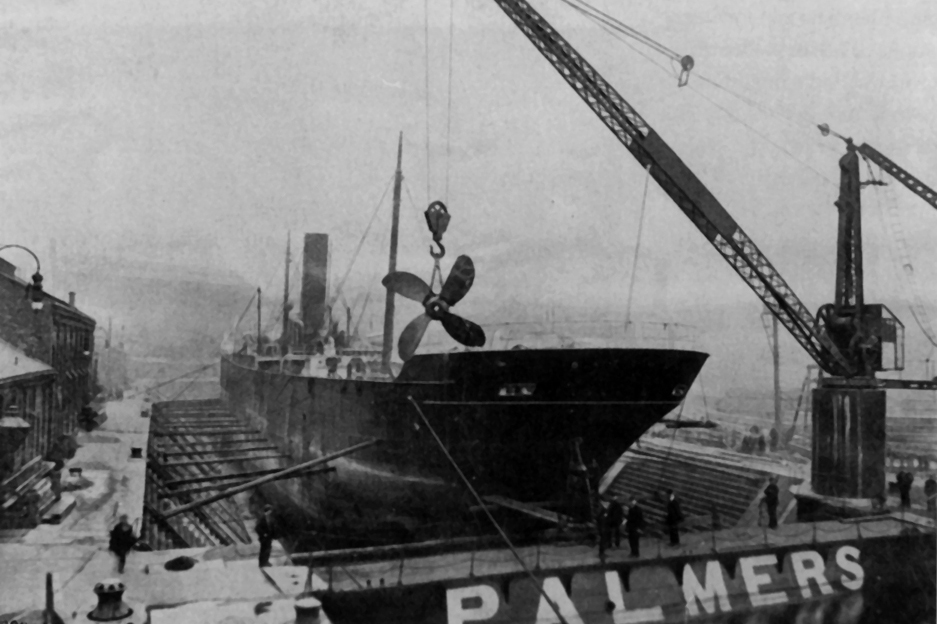The nineteen-hundreds Palmer workforce would be more than 9,000 men and boys. Charles Palmer also held major interests in the local Coal Mining industry. With this in mind, Charles wanted to ferry coal to the capital London from the Durham coalfields. The John Bowes, named after the coal mining concern, came into the story. Driven by a propeller this steamship, the first of its kind, would prove beyond doubt the advantages of carrying coals both on the sea and to London propelled by steam.

Black Diamonds
The John Bowes specifically designed to carry coal was the first steamship to transport, coal regularly what was called black diamonds from the coal pits of the North East to London. However, having said that the Bedlington of 1841, and the Q.E.D of 1844, both ships launched on the Tyne had a small amount of success, but we’re nowhere near the commercial success of Palmer’s vessels.
John Bowes
With the development of railways, coal from other areas of the country could be sent to London a lot more quickly and those parts of the country that still relied on sailing ships, like the northern regions, were at a great disadvantage. The average sailing collier, from the Northern pits, would take a month. That was until the John Bowes was built she had a speed of eight, or nine Knotts did not need to rely on winds, and could do the round trip within one week compared to a sailing collier that would take a month.
The John Bowes’s maiden voyage was on 27th July 1852, Arriving in London on the 30th of July, she was back on the River Tyne by August 3rd taking three weeks of the standard time of a sailing ship.
The ability to build well-constructed ships soon earned Palmer worldwide recognition by 1909 having a berth for the construction of ships Palmer went on to establish blast furnaces, iron, and steelworks, a boiler, and engine work on the site. The dock itself Stretched nearly three-quarters of a mile along the southern bank of the River Tyne.
During the late 1800s, the company output the highest number of ships in Britain. During the company’s lifetime, Palmers would launch 900 plus ships, keeping careful details of each ship built.
Before the construction of the John Bowes launch on the river in July 1852, an iron paddle tug called the Northumberland launched in April 1852, she was the first of his ships small and of little consequence, yet the industry would develop into a major supplier of ships.
Next Page: Palmer Makes It A First